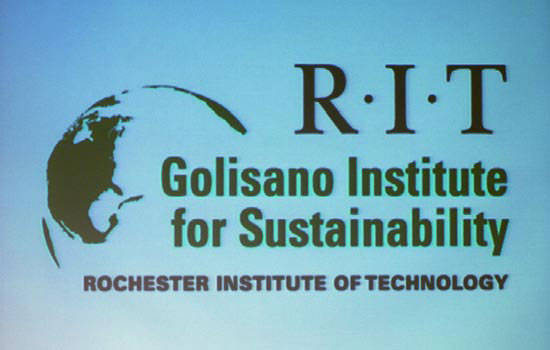RIT research partnership leads to breakthrough in robotic technology
A. Sue Weisler
Edward Brown (back, right) works with several of his student researchers in RIT’s Biomechatronic Learning Laboratory. In the foreground is a robotic arm the team will use in experiments designed to assist people with disabilities in regaining use of their limbs.
Robots may be the solution for people with disabilities who are struggling to regain use of their limbs, thanks to a research team of RIT engineers and students.
Researchers in the Biomechatronic Learning Laboratory are studying individuals with healthy muscles to develop a baseline. Afterwards they plan to test their robotic system on patients suffering from muscular dystrophy. The results will be used to enhance the development of orthotics technologies and contribute to the broader field of rehabilitation robotics, including the creation of better prosthetic limbs.
The study utilizes physiological information, or bio-signals, produced by the human body to improve the performance of external assistive devices called orthoses. The orthoses help individuals with physical disabilities (such as stroke patients or those suffering major spinal cord injuries) regain the use of their arms and legs.
The project is funded through the National Science Foundation Computer, Information Science and Engineering Directorate and includes researchers and students from RIT, Georgia Tech and Georgetown University.
“The data collected through this project will assist designers and engineers in developing more sophisticated assistive aids for individuals suffering from various neuromuscular diseases and musculoskeletal injuries,” explains Edward Brown, assistant professor of electrical engineering at RIT and laboratory director.
Brown adds that people with these types of diseases, such as muscular dystrophy, have extremely weak muscles that waste away over time. These individuals experience difficulties performing simple physical tasks like picking up a cup or holding a spoon. A robotic orthosis that takes advantage of the individual’s residual strength and any remaining physiological information in their limbs, such as an electromyographic signal produced in muscles, could ultimately assist muscular dystrophy patients regain significant use of their limbs.
“Better orthotic technologies could ultimately help people suffering from this disease greatly enhance the quality of their lives,” Brown says.














